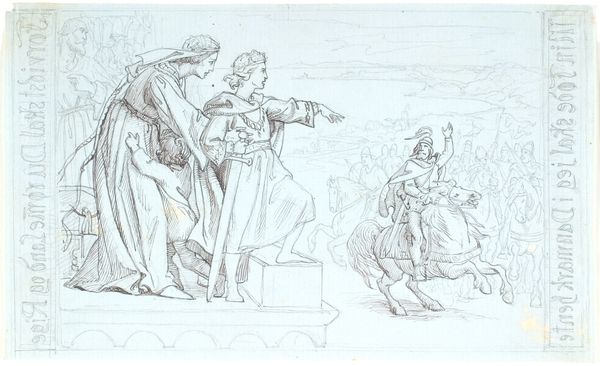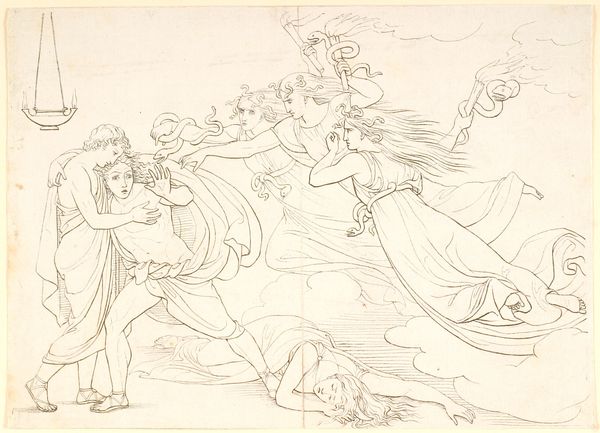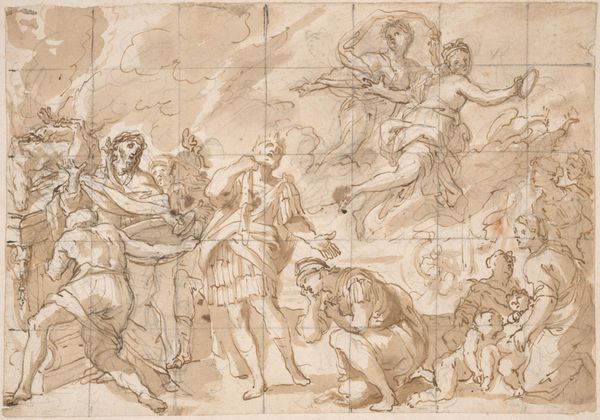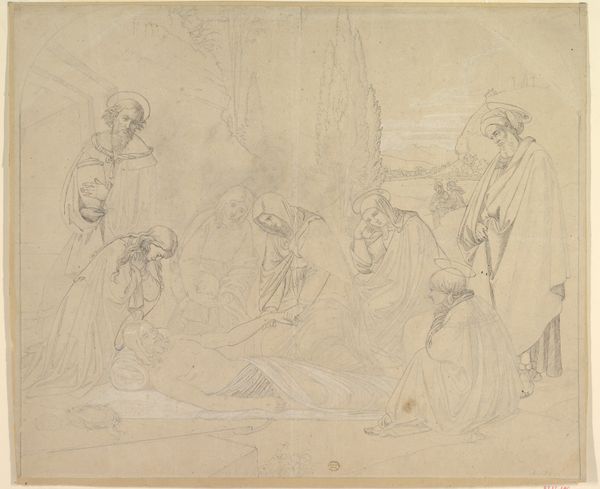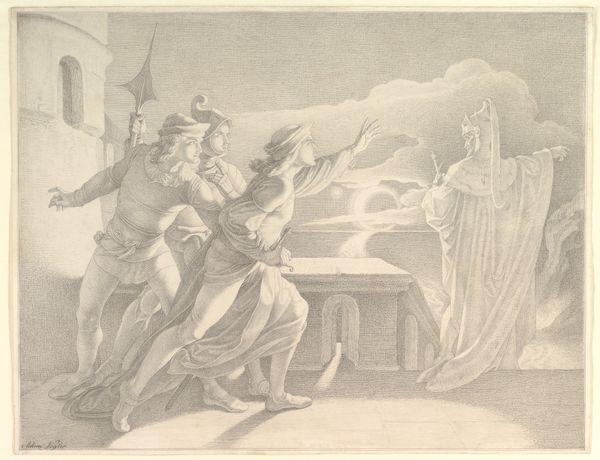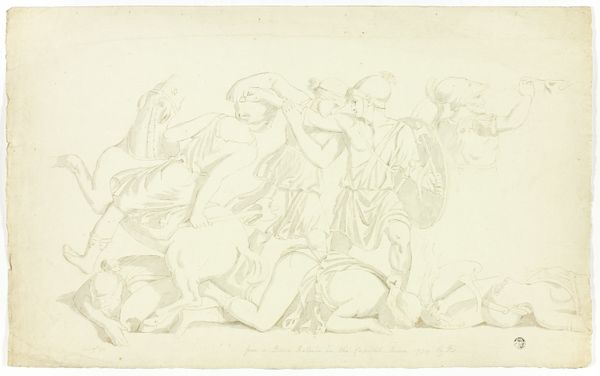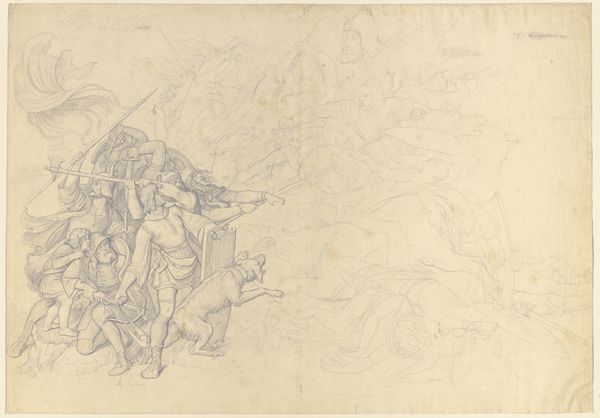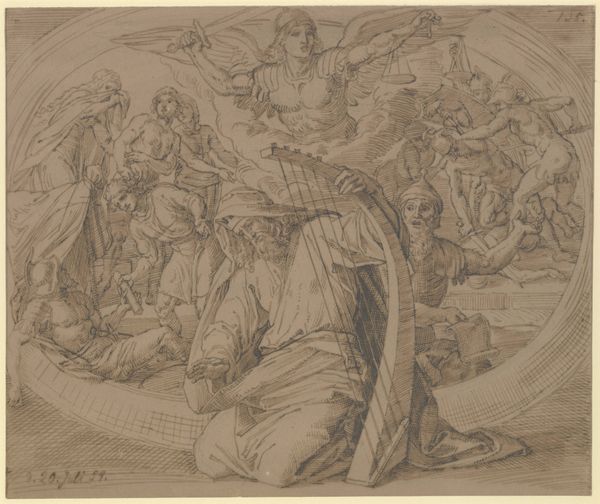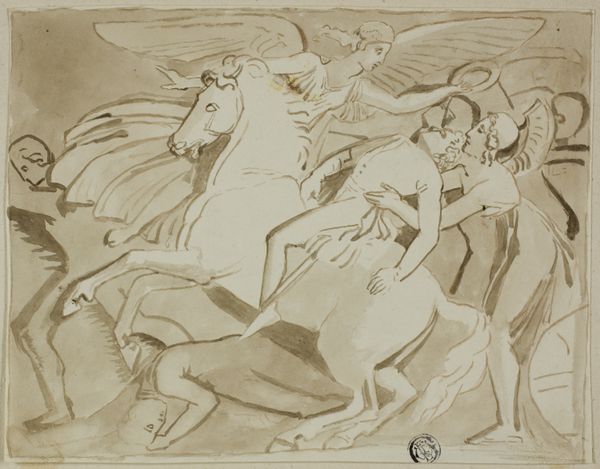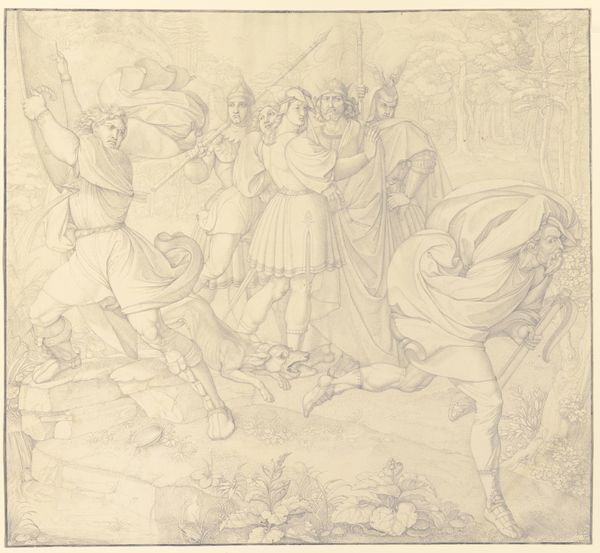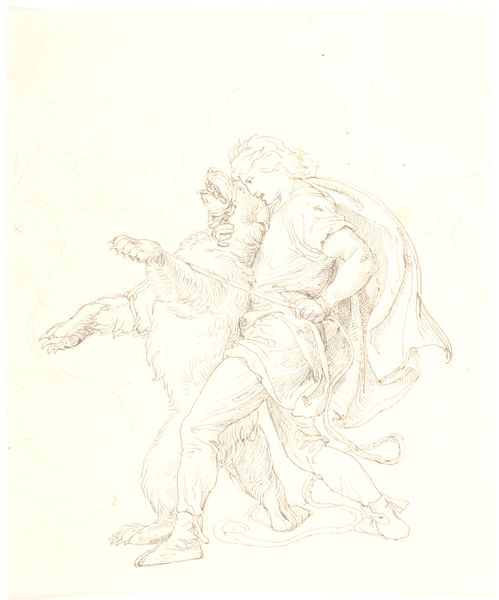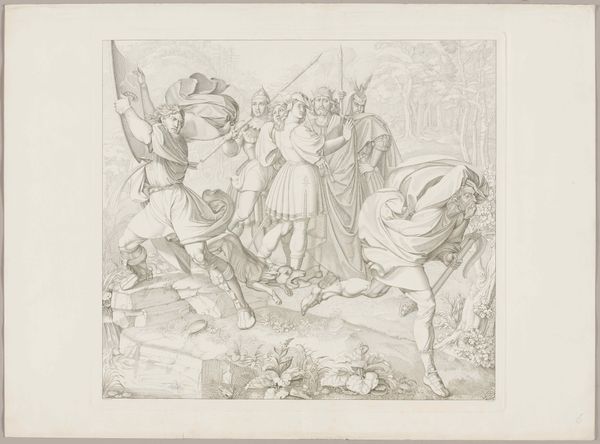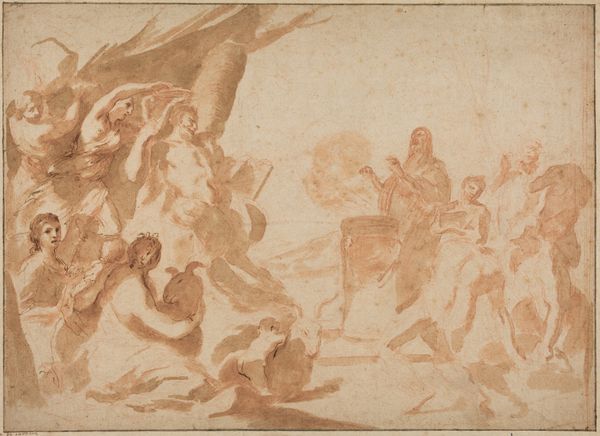
drawing, watercolor
#
drawing
#
figuration
#
watercolor
#
romanticism
#
history-painting
#
watercolor
Copyright: Public Domain
Curator: "Roland slays Agramant," rendered in watercolor by Julius Schnorr von Carolsfeld, dates circa 1822 to 1827. It currently resides at the Städel Museum. Editor: My first thought? It feels like a half-remembered dream—a faded tapestry hanging in the attic of my mind. There's this translucent quality to it, like the story is still being formed, almost emerging out of the very page. Curator: I find that association apt. It mirrors the nature of epic narratives, retold across generations. Schnorr von Carolsfeld draws from the Matter of France, evoking Charlemagne’s battles against the Moors, specifically a scene lifted from Boiardo’s "Orlando Innamorato," where the Christian knight Roland vanquishes King Agramant. We see here not just a clash of arms but a clash of civilizations, resonating through the centuries. Editor: Roland certainly makes a striking figure, doesn't he? Frozen in that almost balletic pose as he’s about to deliver the death blow. I can almost hear the heavy *thunk* of metal on metal! And Agramant, swathed in shades of rose and shame... the romantic agony! It’s compelling even though so much of the piece feels intentionally unfinished. Curator: Precisely, the incompletion echoes the fragmentations inherent in historical narratives, inviting the viewer to fill the gaps, engage in the process of interpretation, and almost collaborate in finishing the piece. Romanticism, as a movement, favored emotional subjectivity, looking towards an idealized past. Editor: What strikes me now, after looking more closely, is the dance of dominance it portrays, so tied into notions of morality and destiny. Almost like one violent moment in a timeless conflict, captured with stunning grace in fragile, barely-there watercolors. It also reflects on Europe's ongoing encounter with "the Other," colored with both fascination and trepidation. It's there right? That thread of anxiety, that push and pull? Curator: Indeed. The depiction reflects how societies process and memorialize historical encounters—not simply recording facts, but embedding cultural biases and moral judgements, visible to us now when we look back at these interpretations of our history. It brings historical analysis alive, showing, perhaps, how such narratives create who we become. Editor: Absolutely. It is fascinating. These pigments whispered onto paper from almost two centuries ago... It all serves to remind us that what we consider history, in its full glory and gore, remains perpetually fluid, shifting ever slightly, with each re-telling.
Comments
No comments
Be the first to comment and join the conversation on the ultimate creative platform.
